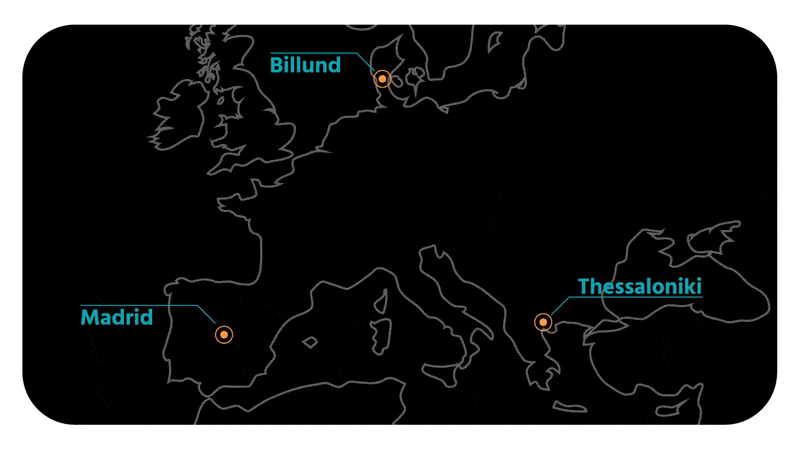Our consortium has made a strategic decision to relocate Use Case III from Madrid Barajas Airport in Spain to Milan Linate Airport in Italy for the second half of the project. This change reflects our commitment to showcasing the BAG-INTEL system’s adaptability across diverse airport layouts and operational challenges.

Why Milan Linate?
Milan Linate Airport presents a unique opportunity to test the BAG-INTEL system in a configuration where the baggage carousels are in close proximity to the baggage insertion point, but space constraints necessitate innovative system placement. This offers the project an ideal scenario to demonstrate the flexibility and modularity of the BAG-INTEL solution. “Milan Linate’s unique layout presents an exciting opportunity to demonstrate the adaptability of the BAG-INTEL system,” said Henrik Larsen, BAG-INTEL Project Coordinator. “This relocation underscores our commitment to addressing real-world challenges in diverse airport environments, including the demanding context of the upcoming Milano Cortina 2026 Olympic Winter Games.”
Key Highlights of the Milan Linate Use Case
The use case at Milan Linate comprises a setup of the full BAG-INTEL system. The project will leverage an existing X-ray/CT scanner and integrate AI-powered cameras for advanced luggage tracking, including reidentification at the customs area near the baggage claim exit. Initially, this use case will be based on a non-integrated scanner/handling system, demonstrating the versatility and effectiveness of the BAG-INTEL solution across different airport layouts. In a fully operational phase, additional components, such as sniffer dogs and the integration of external data sources, may be implemented to further enhance system capabilities. “We are thrilled to partner with BAG-INTEL to explore innovative solutions for enhancing baggage handling and customs operations,” said Michele Sibio, Officer at the Customs Controls Office, Italian Customs Agency. “This collaboration aligns with our vision of leveraging advanced technologies to improve our operations and the effectiveness of customs controls.”
Looking Ahead
The Milan Linate use case is particularly significant as the BAG-INTEL system is expected to be operational during the Milano Cortina 2026 Olympic Winter Games. With passenger traffic expected to surge, the system will play a crucial role in enhancing customs controls of incoming baggage. This adjustment highlights BAG-INTEL’s readiness to tackle real-world challenges faced by the customs teams and its ability to deliver impactful solutions tailored to various operational environments.
About Milan Linate
Milan Linate Airport, officially named after Enrico Forlanini, an aviation pioneer and inventor born in Milan, is the closest airport to the city of Milan, located just 7 kilometers from the city center. Known commonly as “Linate” after the nearby village, it serves as a vital hub for domestic and European destinations. The airport features a 70,000 square meter passenger terminal with 71 check-in desks, 12 hand-luggage check-in desks, and 8 passport control desks. With 24 gates, 5 boarding fingers, and a 398,000 square meter apron, it offers modern facilities to efficiently handle passenger and baggage flow. As one of three airports in the Milan metropolitan area, alongside Malpensa and Orio al Serio, Linate plays a key role in connecting travelers to the region and beyond.
